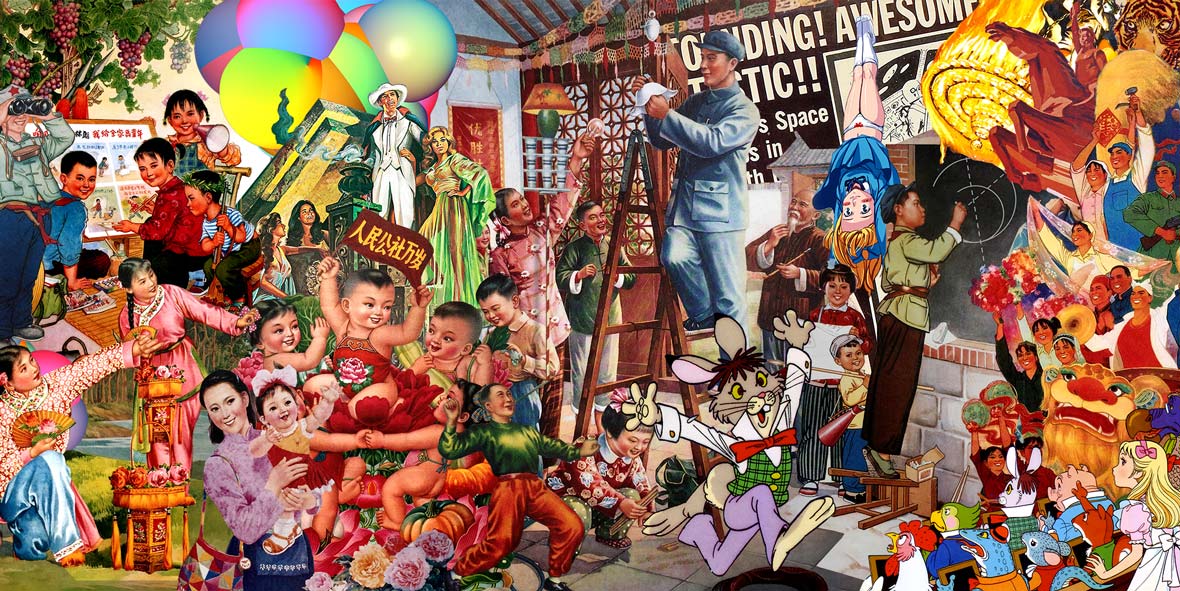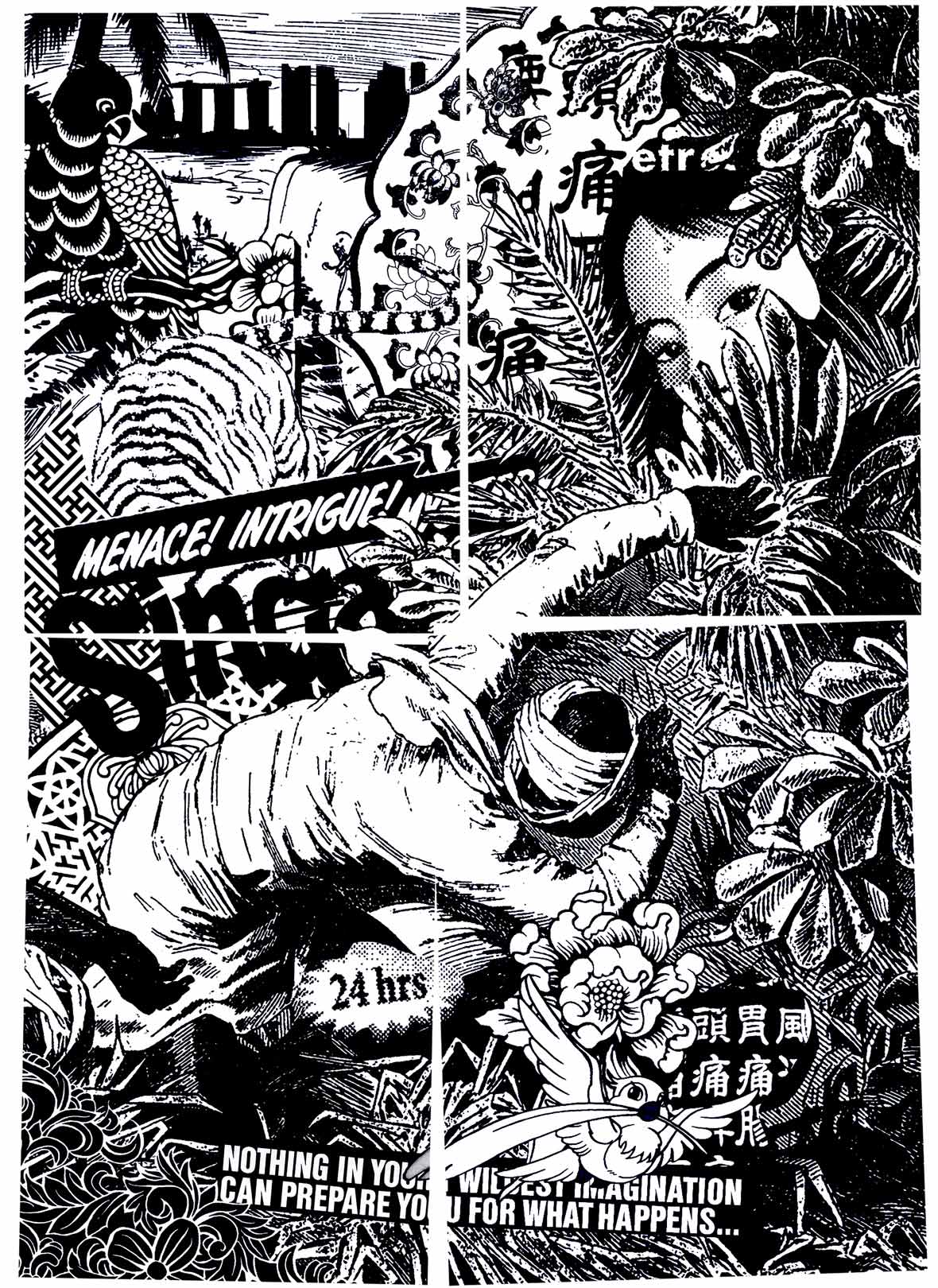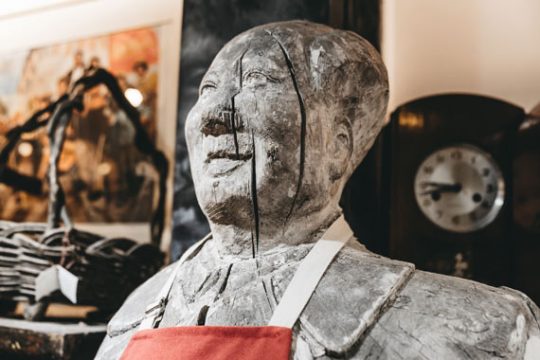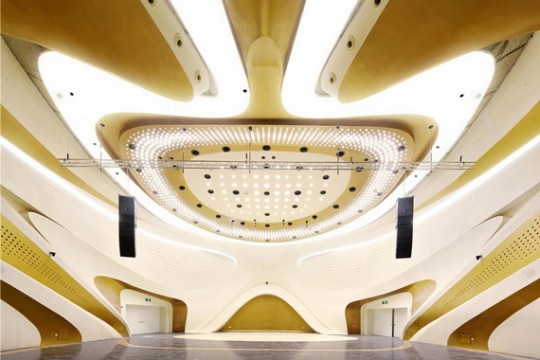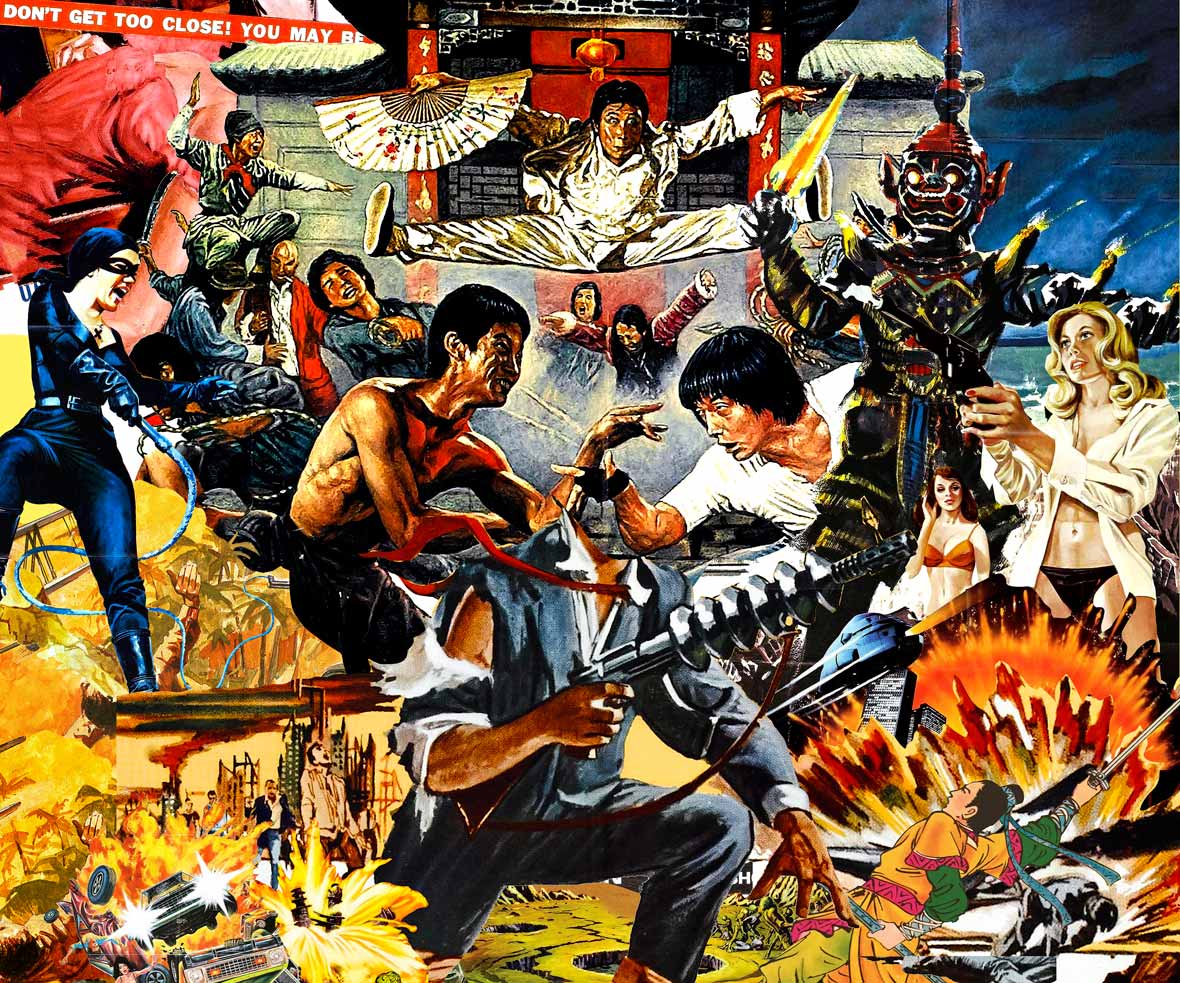
As a teenager in the early ‘90s, Mojoko would wander the streets of Hong Kong, reveling in the constant barrage of flashing lights and neon signs. “Hong Kong was sensory overload,” he recalls. “The video game arcades were the coolest.” Although he went to Europe for college and didn’t return to Asia for nearly a decade, that part of his life left an indelible mark. As his identity as an artist developed, that chaotic array of pop culture images came to define his style.
90 年代初期,还是青少年的 Mojoko 常常游荡香港的街道上,陶醉于闪光灯和霓虹灯招牌熠熠闪耀的光芒。他回忆道:“香港是一个让人感官‘超载’的城市,最酷的就是电子游戏机房。” 虽然他远赴欧洲求学,快十年才重回亚洲,但那些少年时的回忆却在他生命中留下了不可磨灭的印记。成为艺术家后,他把那些曾风靡一时的文化图像混乱组合,塑造出他的个人风格。
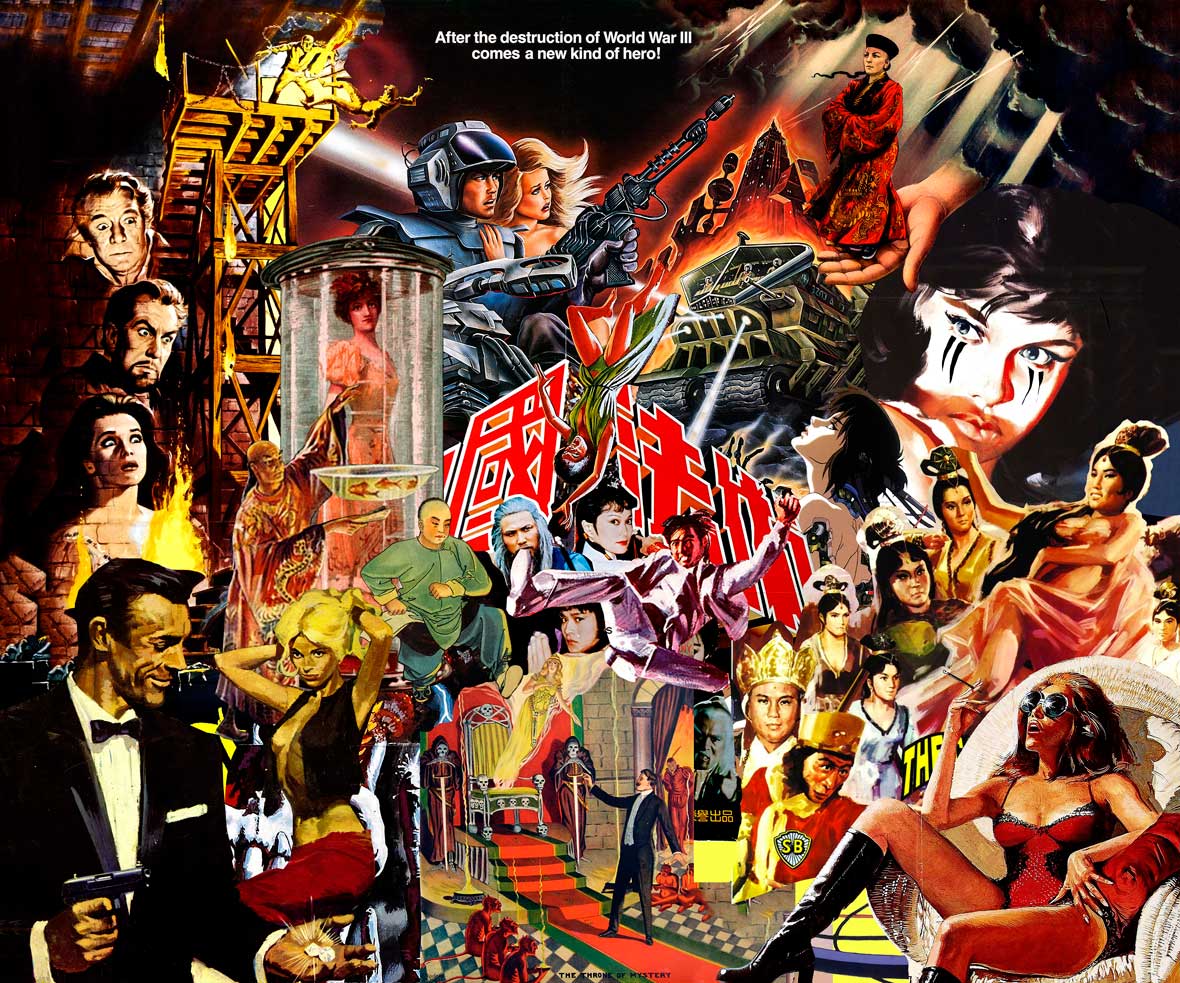
Mojoko is a collage artist and illustrator. His works are crowded with movie posters, old logos, brand icons, and comic book images inspired by the futuristic sheen of his hometown, with the hypnotic glow of underground arcades and the glitzy advertisements of a hyper-capitalist society. At first he sought out those images stamped on his childhood brain, but the quest for vintage from his day quickly evolved into a passion for even older images going back as far as the middle of the twentieth century.
Mojoko 是一位拼贴艺术家和插画家。他的作品充满了各种电影海报、旧标识、品牌图标和漫画图像,灵感正是来自于香港——这座充满未来感的城市,以及那些地下游戏厅的迷幻光芒、超资本主义社会的炫目广告。起初,他只是想寻找童年回忆中的那些图像,慢慢地,他开始热衷搜集上世纪中期那些更老的图片。
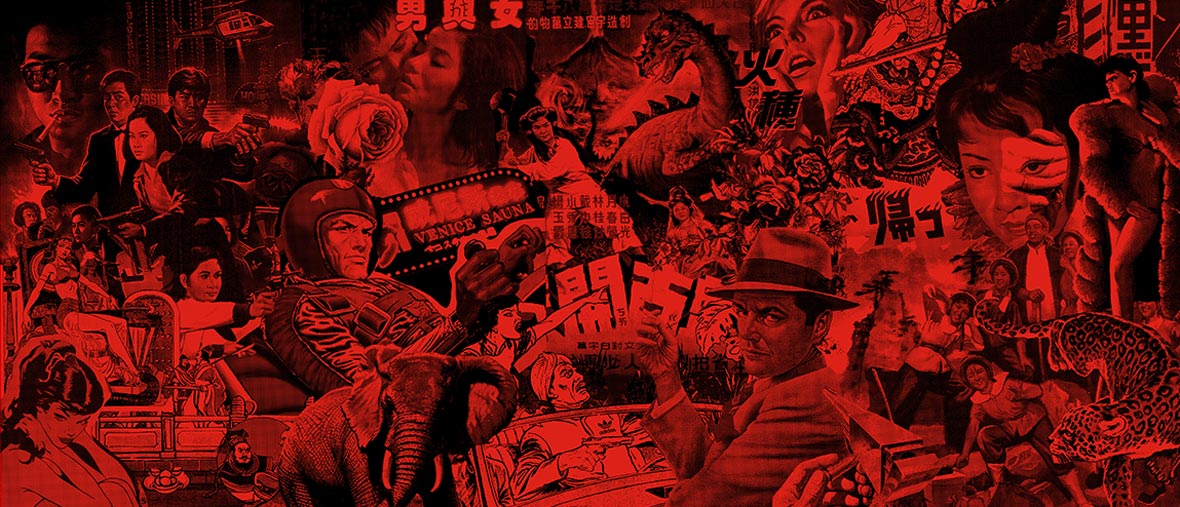
“There were thousands of game halls in Hong Kong, and some were really dodgy. You could smoke and hang out there all day,” he says. “Revisiting or discovering treasures from those days really gets me buzzing. I recently discovered an old TV Times from Hong Kong with ads for things I had totally forgotten about, like Rolex in Chinese and Rambo with Chinese subtitles. It was a weird mix of pop culture from the West.
“But I find the real chemistry happens in collage when you mix the old with the new. There’s some funny ’50s Chinese pop culture material which I didn’t even know existed before I started digging. Also Malaysia and Indonesia have some really progressive magazines and music from the ’50s and ’60s to draw upon.”
“香港有成千上万间游戏厅,有些真的不是很正规。你可以在里面抽烟,呆一整天。” 他说,“重温那些日子的珍贵回忆,让我心情很激动。我最近找到一份旧的香港报纸,上面广告推销的产品有很多我都已经完全忘记掉了,比如中文标识的劳力士(Rolex)和配了中文字幕的电影《第一滴血》(Rambo),看上去像是与西方流行文化的奇怪混合。”
“但是我发现,当你把旧的和新的混合在一起,组成拼贴画时,才能真正看到两者之时的化学反应。在我开始挖掘之前,我都不知道原来 50 年代的中国流行文化中有一些那么有趣的材料。包括五六十年代的马来西亚和印度尼西亚,也有一些非常前卫的杂志和音乐,它们也都是我创作的素材。”
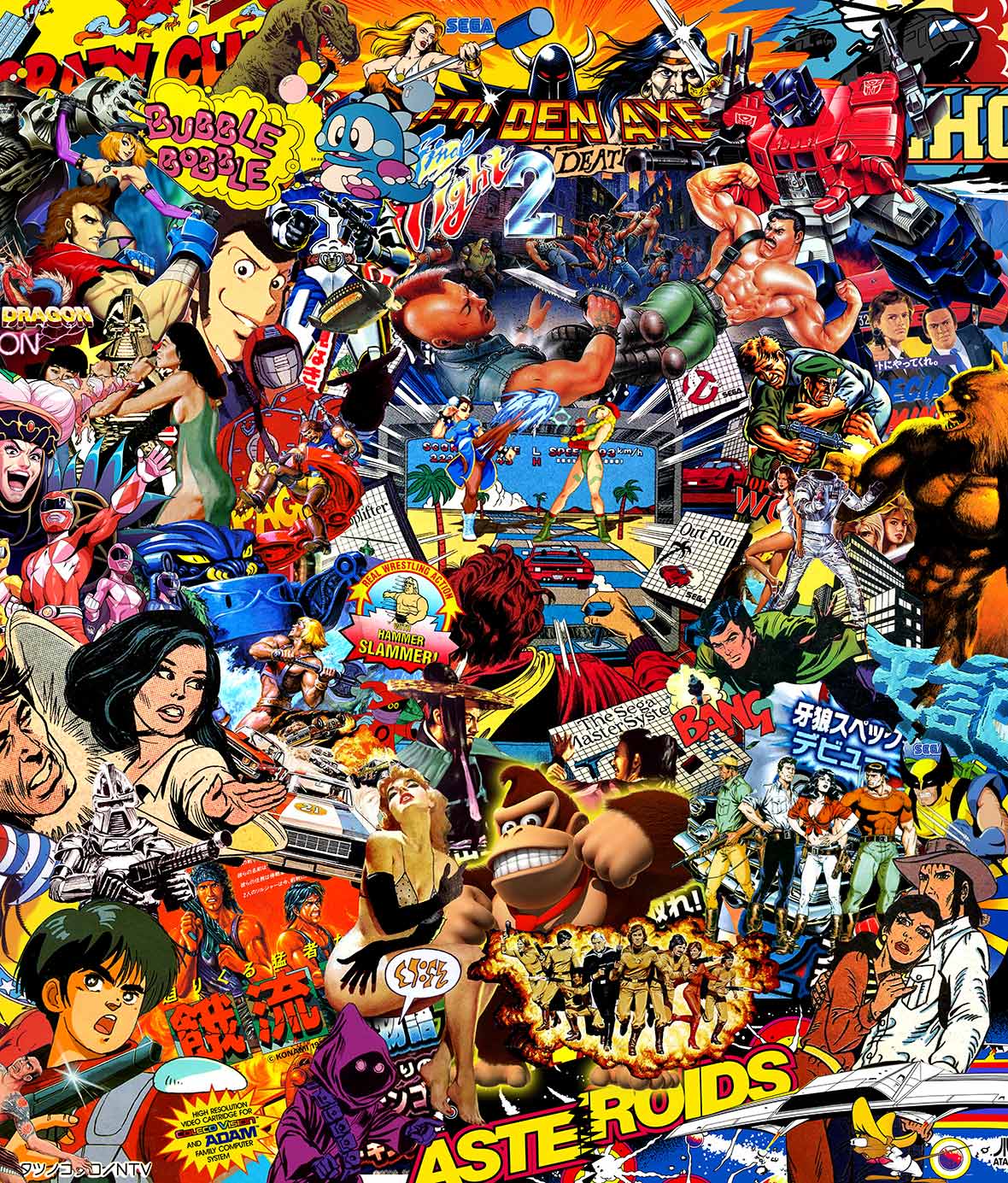
Although his collages are pieced together digitally, all the material comes from physical sources stored in stacks of boxes all over Singapore, where he’s lived for 15 years. He also paints, creating the same collage effect, but using a comic-style with monotone linework. When he creates mural-sized pieces, he usually scales them up with wheat paste paper.
虽然他是通过电脑创作拼贴画的,但所有素材都来自现实生活,被他存放在新加坡家中的一堆箱子里。他已经在新加坡生活了 15 年。除了拼贴画创作,他还绘画,通过绘画创造漫画风格与单色线条的拼贴画。当他要制作壁画大小的作品时,他通常会先用小麦糊纸将素材放大。
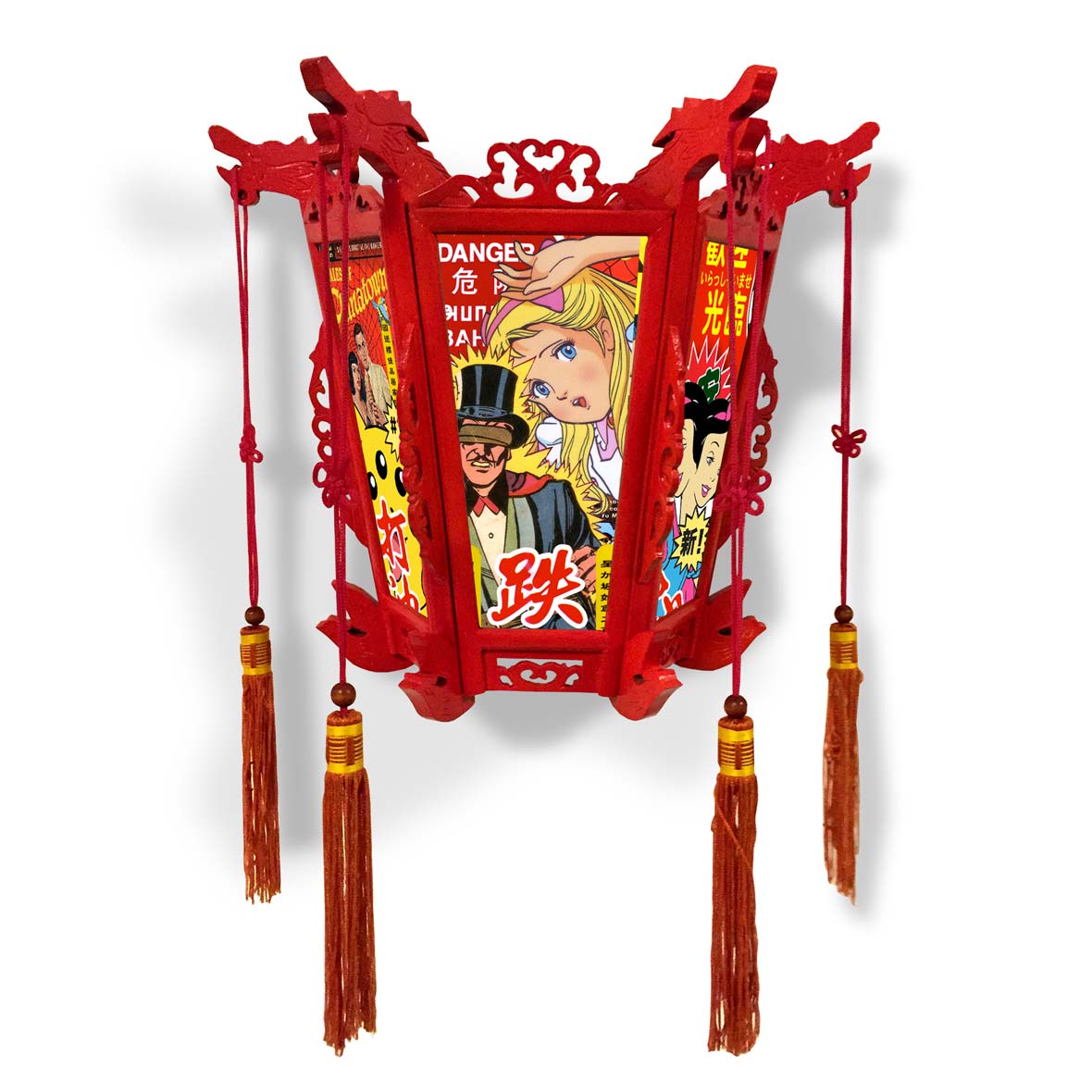
While his work can be a little risqué, full of suggestively clad female stars and violent supervillains, Mojoko has begun trying to make more child-friendly art. He decided that the gallery he founded, Kult Gallery, wasn’t the right place to present his new trajectory, so he handed it off to the next generation and started the magazine EYEYAH!, which aims to educate kids with progressive artwork. “Becoming a dad changed my career, but not my art. I still can’t make kids’ artwork,” he laughs. “But that’s where the magazine comes in, where we use the tricks of advertising for good instead of selling shit we don’t need.”
Mojoko 的作品风格比较大胆,总是出现衣穿性感的女明星和暴力的超级恶魔,但他已经开始尝试创作更适合儿童的作品。他觉得自己创立的画廊 Kult Gallery 不是展示这些新作品的合适场所,于是他把画廊交给了别人打理,自己又创办了《EYEYAH!》杂志,旨在向小孩推广前卫艺术作品。“成为一名父亲后,我的职业生涯也发生了转变,但我的艺术创作没有变。我仍然无法创作儿童艺术。” 他笑着说,“但这就是杂志的用武之地,我们可以利用广告来推广好的东西,而不是去卖一些我们不需要的垃圾。”
